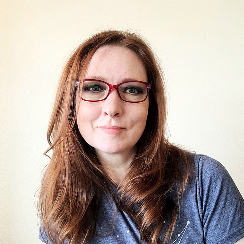Jason Alba has been a Pluralsight Author since 2012, specializing in soft skills and professional development. He started his IT career as an intern developing tools for a robust intranet. He transitioned to an IT manager at another company where his job included web development as well as other IT functions. After an acquisition Jason became VP and then general manager at a newly formed tech company. He founded and manages JibberJobber.com, a CRM for job seekers. Jason has authored three books.
... more He speaks and blogs regularly about soft skills, professional development, and career management. He has a CIS undergraduate and an MBA from Idaho State University.
Casey is an entrepreneurial leader with experience managing projects, analyzing challenges, and designing solutions in healthcare, mobile, digital media, online learning, and more. His Pluralsight courses have helped nearly 1,000,000 professionals gain the skills they need to tackle new challenges and earn globally-recognized certifications, including PMP, CBAP, CAPM, PMI-ACP, CompTIA Project+, ICAgile, and more.
Stephen Haunts is an experienced Software Developer and Leader who has worked across multiple business domains including Computer Games, Finance, and Healthcare Retail and Distribution. Stephen has worked in languages ranging from Assembler, various forms of BASIC, to C and C++, and then finding his love of C# and .NET.
Stephen also runs a Software Development and Leadership blog called {Coding in the Trenches} which can be read at http://www.stephenhaunts.com . Stephen also runs a small music
... morelabel and sound design company where he also developed the site and content management system.
As well as blogging, and running software teams for large companies, Stephen also runs some open source projects on CodePlex including SafePad - an encrypted text editor, Text Shredder - an encrpyted messaging tool, and Smoke Tester - a post deployment verification testing framework.
Alan Ackmann teaches business and technical writing in the Writing, Rhetoric, and Discourse Department at DePaul University in Chicago, IL, where he lives with his wife and two children. His professional specialties include career development writing and the rhetoric of slideware and presentations. In his spare time, he enjoys jogging, reading, and singing (though not always in that order).
Amber has been a software developer and technical trainer for over two decades, sharing her expertise in AI, machine learning, AWS, and Power Apps with students around the world. She has a knack for making complex tech topics easy to grasp, whether you’re a developer, designer, or business professional. Amber holds certifications in machine learning, AWS, and various Microsoft technologies, including her experience as a former Microsoft Certified Trainer. With a strong background in visual com
... moremunication and user experience, she brings a wealth of knowledge and a friendly, approachable style to her teaching.
Heather Ackmann is an author and instructional designer. She has a passion for technology and a soft spot for people who find technology frustrating. She loves showing people how to make technology work better for them and figuring out how to make less than perfect technology work better for all. For over a decade now, Microsoft has honored her with the Microsoft MVP award in Office Systems and Services. In 2021, she completed her MS degree in human-computer interaction with distinction. She use
... mores her knowledge of user interaction design daily in creating better instructional materials that resonate with both the client and the learner.
Boris is the Founder of presentation agency 356labs and a PowerPoint MVP. He has presented in 25+ countries and has been rated as the top speaker numerous times. Boris has years of experience as a trainer, mentor and consultant and he and his team are working with companies like Deutsche Telekom, KPMG, Renault, Societe Generale, Roche, Publicis, Experian, Bosch, VMWARE, adidas and a many, many more to help them write, design and deliver truly effective presentations. His agency is also the only
... morepresentation agency in the world speaking at Microsoft Ignite – the biggest yearly event of Microsoft, attended by more than 25000 people.
John Papa is a dedicated father and husband, a professional Web Developer, and professional storyteller in the technology community. He currently is a Partner GM for Microsoft leading the Growth Ecosystems Cloud Advocacy teams and has formerly worked for Disney on several web and mobile applications ans systems that you may have used.
His passions are coding and teaching modern web technologies, running, and enjoying everything Disney with his family.
John is a co-host of the Web Rush podcast
... more, author of the Angular Style Guide, and many popular Pluralsight online videos courses.
You can reach John on Twitter at @john_papa or listen at Web Rush https://webrush.io
Glenn E. Weadock (MDAA, MCAAA, MCT, MCSE, MCSA, MCITP, A+, Security+) is the president of Independent Software Inc., which he founded in 1982 after graduating from Stanford University's engineering school. ISI provides expert witness, consulting, and training services in the IT field with a focus on operating systems and networking technologies. Glenn is the author of 18 commercial books on topics such as Windows clients and servers, Microsoft certification, website design, troubleshooting, and
... moreclient/server networking, for publishers including McGraw-Hill, Wiley, Sybex, and the famous Dummies series. Glenn has developed seminars and video courses for Data-Tech Institute, Global Knowledge, and O’Reilly Media; co-authored two Microsoft Official Curriculum (MOC) courses on Windows Server 2008; and has taught PC and network troubleshooting, design, and support to tens of thousands of students in the US, UK, Canada, and Southeast Asia. Glenn advised the U.S. Justice Department in the Microsoft antitrust case, and has been an expert witness in patent cases involving companies such as IBM, Amazon, Facebook, Instagram, Disney, and LendingTree. He has a Bachelor of Science in Engineering With Distinction, from Stanford University, where he was elected to the Phi Beta Kappa and Tau Beta Pi honor societies. In his spare time, Glenn enjoys hiking, reading, and music.
Dan Appleman is a well known author, software developer, and speaker. He is the author of numerous books, ebooks, and online courses on various topics (technology and other). His latest book is "Advanced Apex Programming" - advancedapex.com.
Rob Conery co-founded Tekpub and created This Developer's Life. He is an author, speaker, and sometimes a little bit opinionated.
 20 courses
20 courses 41 hours
41 hours











